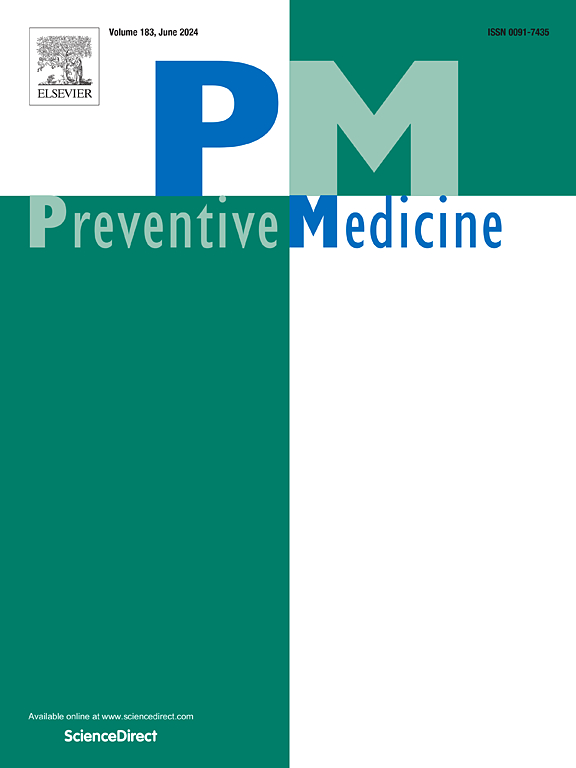Rural-urban differences in the symptoms, side effects, and physical activity of cancer survivors in the United States
IF 3.2
2区 医学
Q1 MEDICINE, GENERAL & INTERNAL
引用次数: 0
Abstract
Objective
To evaluate rural-urban differences in cancer-related symptoms, side effects, activities of daily living, and physical activity among cancer survivors in the United States.
Methods
We analyzed the Health Information National Trends Survey -Surveillance Epidemiology End Results (HINTS -SEER; n = 1054 cancer survivors) from the Greater San Francisco Bay Area, Iowa, and New Mexico between January – August 2021. Respondents were surveyed on cancer-related symptoms and side effects along with their activities of daily living (ADL) and physical activity (PA). We calculated weighted percentages and Rao-Scott chi-square tests for reported differences between rural and urban survivors. Rural/urban status was determined using Rural Urban Continuum Codes.
Results
Rural and urban cancer survivors did not differ in their reporting of symptoms or side effects, with each group reporting approximately 20 % or greater prevalence of each assessed symptom or side effect. For ADLs, rural cancer survivors more frequently reported difficulty dressing/bathing compared to their urban counterparts (7.7 % vs. 3.1 %, p = 0.02), but there were no statistically significant differences for other ADLs. A higher percentage of urban cancer survivors compared to rural reported meeting aerobic PA recommendations of ≥150 minutes moderate intensity activity per week (47.9 % vs. 33.8 %, p < 0.001).
Conclusions
While many cancer survivors report symptoms and side effects of cancer treatment, no substantial variations existed by rurality. Important exceptions to this was that rural cancer survivors reported greater difficulty with bathing and dressing, and lower PA. Interventions and research to address these rural-urban differences will be critical to ensure rural cancer survivors have optimal long-term outcomes.
美国癌症幸存者的症状、副作用和身体活动的城乡差异
目的评估美国癌症幸存者在癌症相关症状、副作用、日常生活活动和身体活动方面的城乡差异。方法分析卫生信息全国趋势调查-监测流行病学最终结果(提示-SEER;n = 1054名癌症幸存者)来自大旧金山湾区,爱荷华州和新墨西哥州,时间为2021年1月至8月。调查对象的癌症相关症状和副作用以及日常生活活动(ADL)和身体活动(PA)。我们计算加权百分比和Rao-Scott卡方检验报告农村和城市幸存者之间的差异。使用农村/城市连续代码确定农村/城市状态。结果农村和城市癌症幸存者报告的症状或副作用没有差异,每组报告的每种评估的症状或副作用的患病率约为20%或更高。对于adl,与城市患者相比,农村癌症幸存者更频繁地报告穿衣/洗澡困难(7.7%比3.1%,p = 0.02),但在其他adl中没有统计学上的显著差异。与农村相比,城市癌症幸存者达到有氧运动协会建议的每周≥150分钟中等强度运动的比例更高(47.9% vs 33.8%, p <;0.001)。结论:虽然许多癌症幸存者报告了癌症治疗的症状和副作用,但农村地区没有实质性的差异。重要的例外是,农村癌症幸存者报告洗澡和穿衣更困难,PA更低。解决这些城乡差异的干预措施和研究对于确保农村癌症幸存者获得最佳的长期结果至关重要。
本文章由计算机程序翻译,如有差异,请以英文原文为准。
求助全文
约1分钟内获得全文
求助全文
来源期刊

Preventive medicine
医学-公共卫生、环境卫生与职业卫生
CiteScore
7.70
自引率
3.90%
发文量
0
审稿时长
42 days
期刊介绍:
Founded in 1972 by Ernst Wynder, Preventive Medicine is an international scholarly journal that provides prompt publication of original articles on the science and practice of disease prevention, health promotion, and public health policymaking. Preventive Medicine aims to reward innovation. It will favor insightful observational studies, thoughtful explorations of health data, unsuspected new angles for existing hypotheses, robust randomized controlled trials, and impartial systematic reviews. Preventive Medicine''s ultimate goal is to publish research that will have an impact on the work of practitioners of disease prevention and health promotion, as well as of related disciplines.
 求助内容:
求助内容: 应助结果提醒方式:
应助结果提醒方式:


